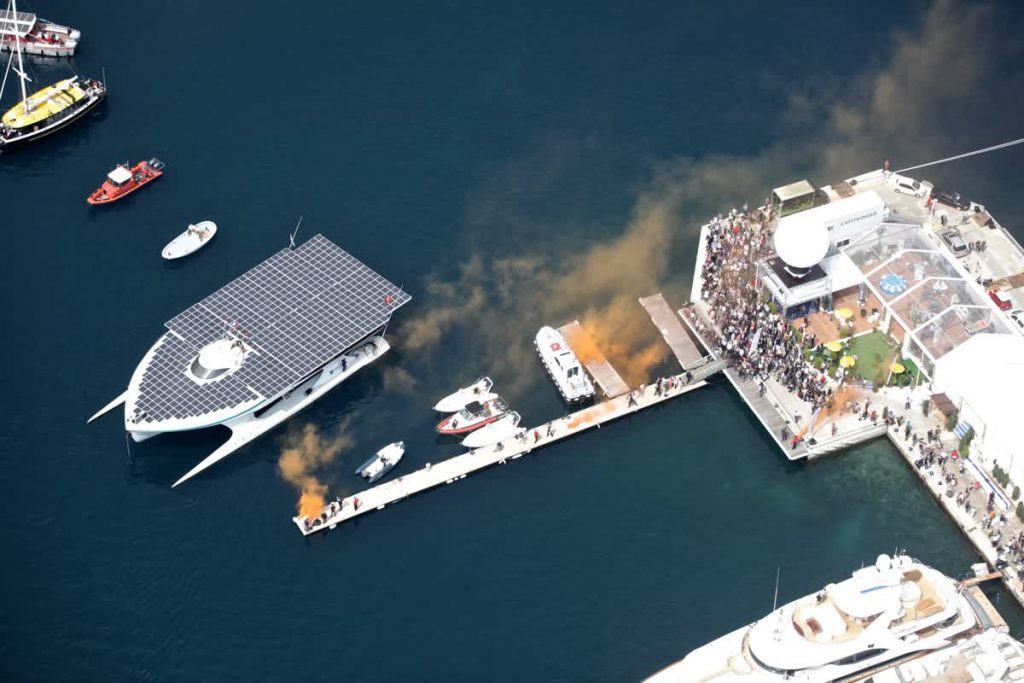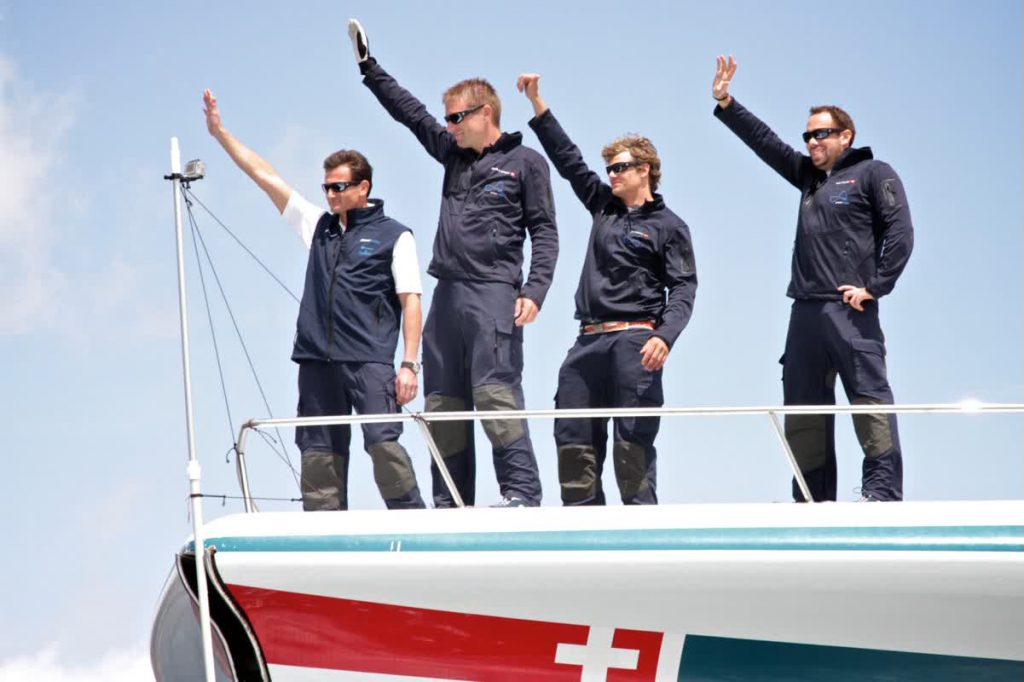12 significant steps
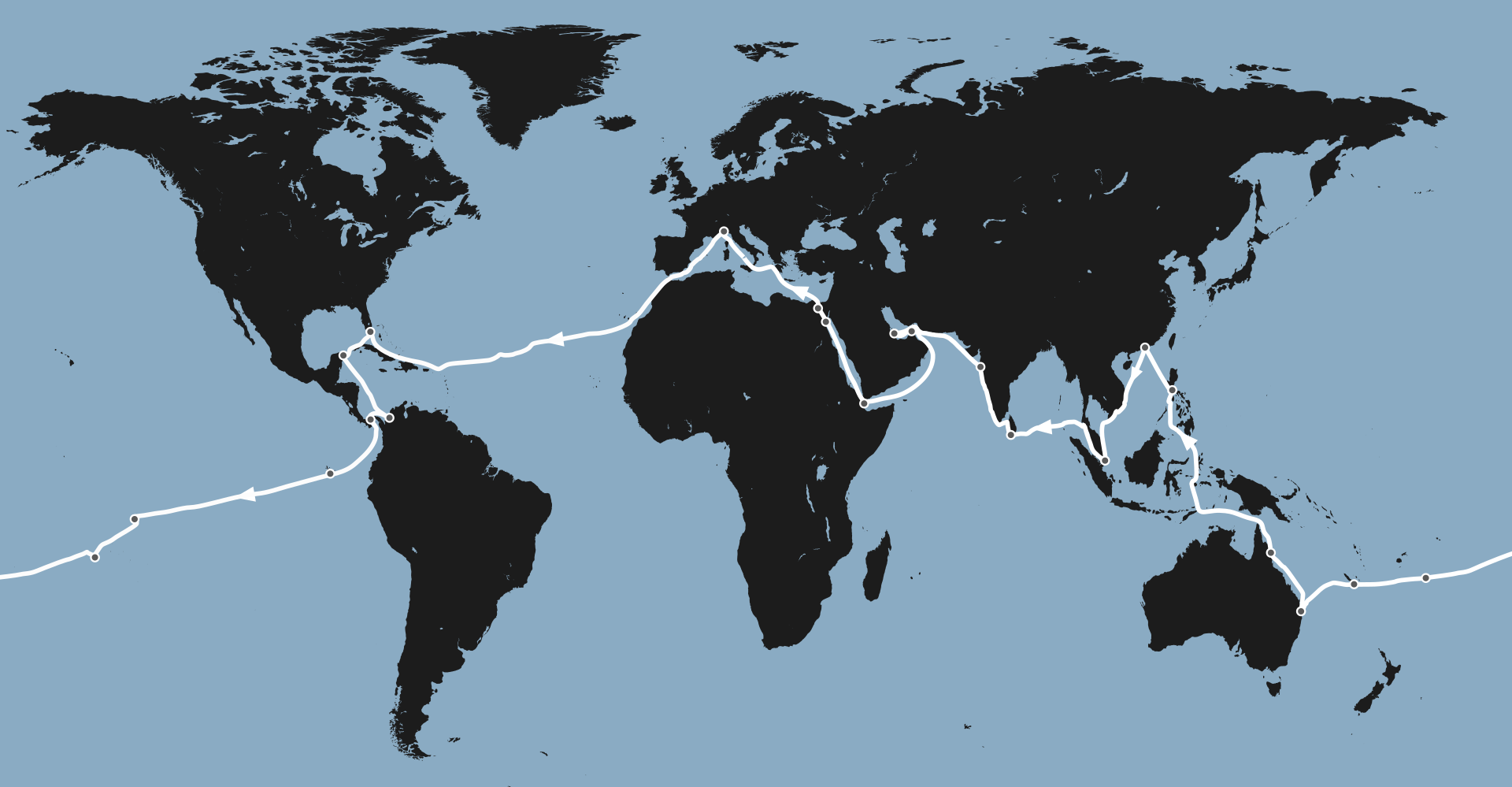
On Monday, 27 September 2010, at 14:23 precisely PlanetSolar crossed the start line for her world tour, the first ever to be undertaken using solar energy. She left port in the Principality of Monaco, which provided full support throughout the project. Some hours beforehand Prince Albert II of Monaco went onboard to wish the crew “fair winds” or rather, a lot of sun! Foghorns sounded throughout the port, saluting the departure of the solar vessel. The coast disappeared from view whilst the prow sliced through the waters of the Mediterranean and headed West.
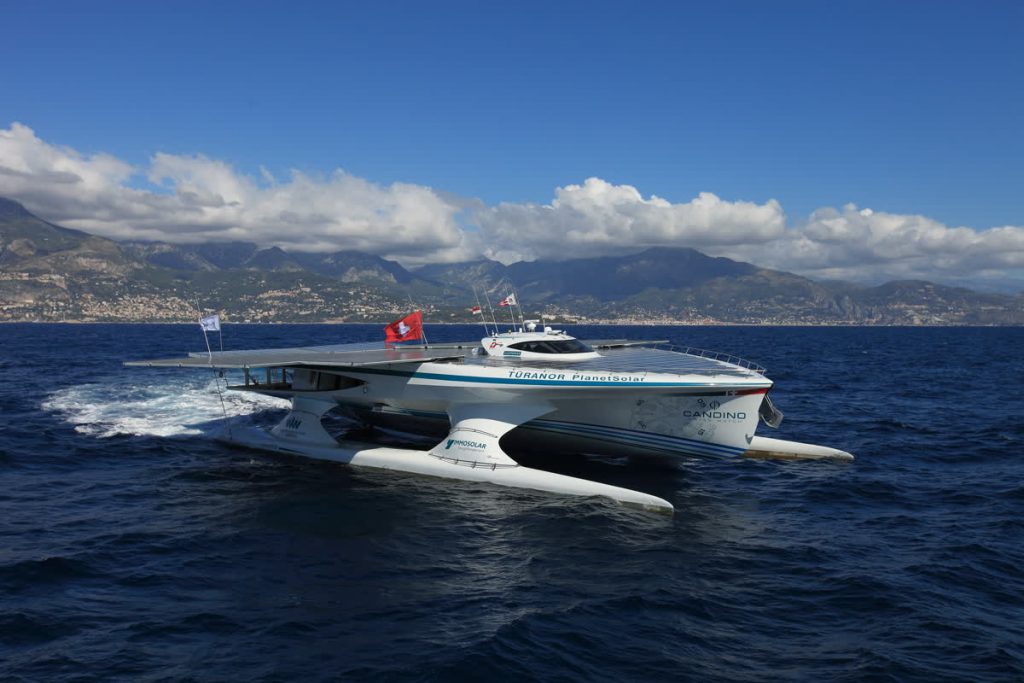
After going through the Straits of Gibraltar the immense horizon of the Atlantic opened up before PlanetSolar. From Las Palmas to Miami, nearly 20,000 kilometres loomed ahead of the solar boat. She would be the second to cross the Atlantic using solar energy because it had already been done between 2006 and 2007 by Sun21, another project from Swiss pioneers. The crossing lasted for a good month. The option chosen was to sail a more or less central route, at about latitude 40° North. In fact, it involved taking advantage of maximum sunshine as well as the trade winds which are ever present in autumn. PlanetSolar entered port in Miami on 27 November 2010, finishing her first ocean crossing successfully.
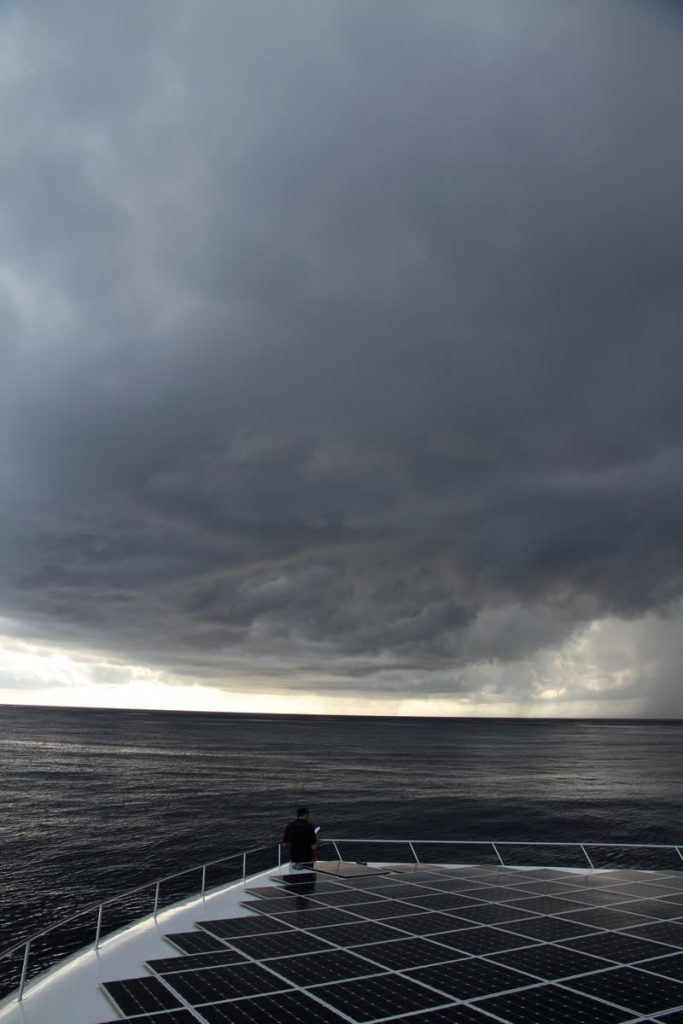
On the morning of 7 December 2010 PlanetSolar and her crew entered Cancun, Mexico. At the time the UN Climate Change Conference was being held in this city. The aim was to moor the solar catamaran in front of the palace where the discussions and decision-making were taking place However, the idea had to be abandoned because just there the lagoon was too shallow. PlanetSolar was at risk of running aground, putting the entire Round the World project in danger. The leaders present could not therefore go aboard and PlanetSolar turned round to head for Carthagena, Colombia.
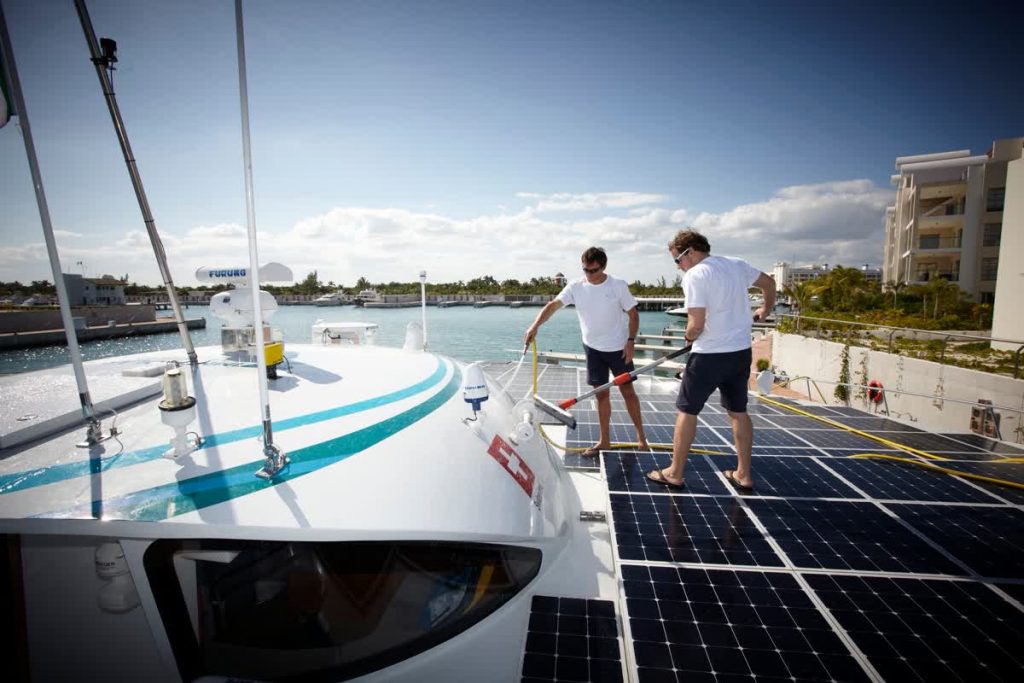
On 13 January 2011 PlanetSolar prepared to leave the waters of the Atlantic to follow a new horizon, the Pacific Ocean. The huge solar catamaran would go through the Panama Canal. For the occasion, Immo Ströher, who financed the building of the boat, made the trip. He had, in fact, sworn he would be onboard when the boat went through the famous canal. The passage through the locks normally only takes place with the assistance of locomotives hauling the vessels. However, for PlanetSolar the entire world tour had to be solar-powered. So the catamaran was authorised to travel the 77 kilometres of canal under her own steam, using her solar propulsion. Onboard it was very emotional. The gates to the Pacific were now wide open.
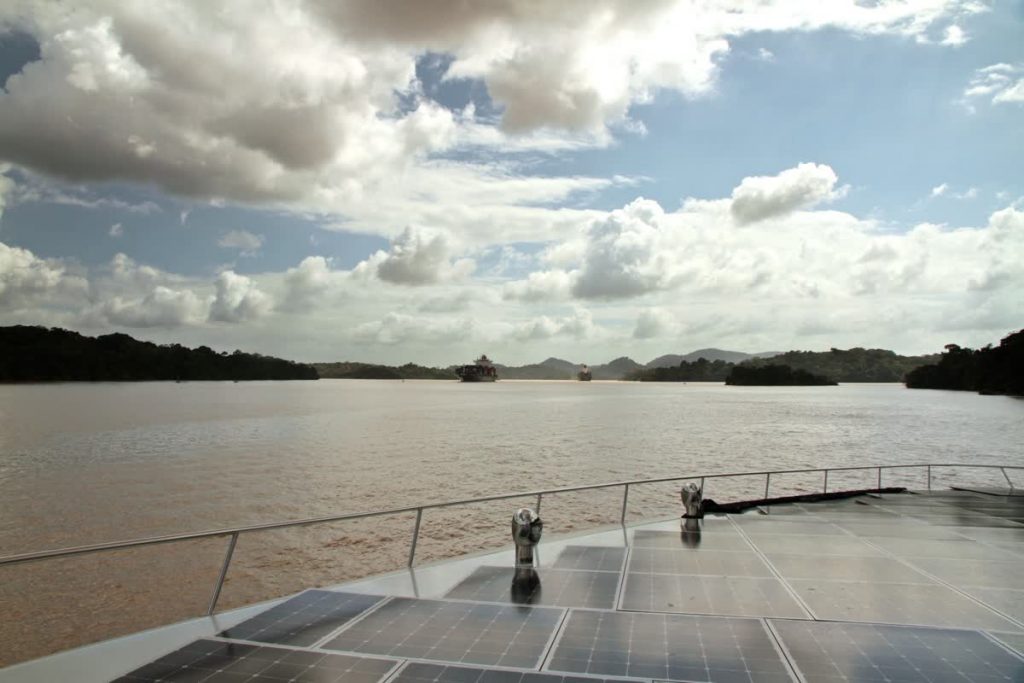
On her route to the Galapagos Islands, the first port of call on her Transpacific crossing, PlanetSolar had to cope with one of the most painful experiences of her Round the World Tour. In fact, she had to cross what seemed like a continent of plastic waste drifting with the currents, witness to land-based humanity with little concern for its impact on the oceans. One day from his cockpit the skipper, Patrick Marchesseau, saw a giant tortoise trapped in the ropes of a buoy, drowning in this ocean of plastic. Unable to free herself she was forced to drift. So Jens and Raphaël decided to dive in to help her. One or two cuts with the knife and there she was, free again. The noble animal dived and disappeared into the waters below. Despite their protective diving suits the two rescuers came out of the brackish water covered in sticky leeches. That day the crew observed how much the ocean is man’s dustbin; how urgent it is to change things.
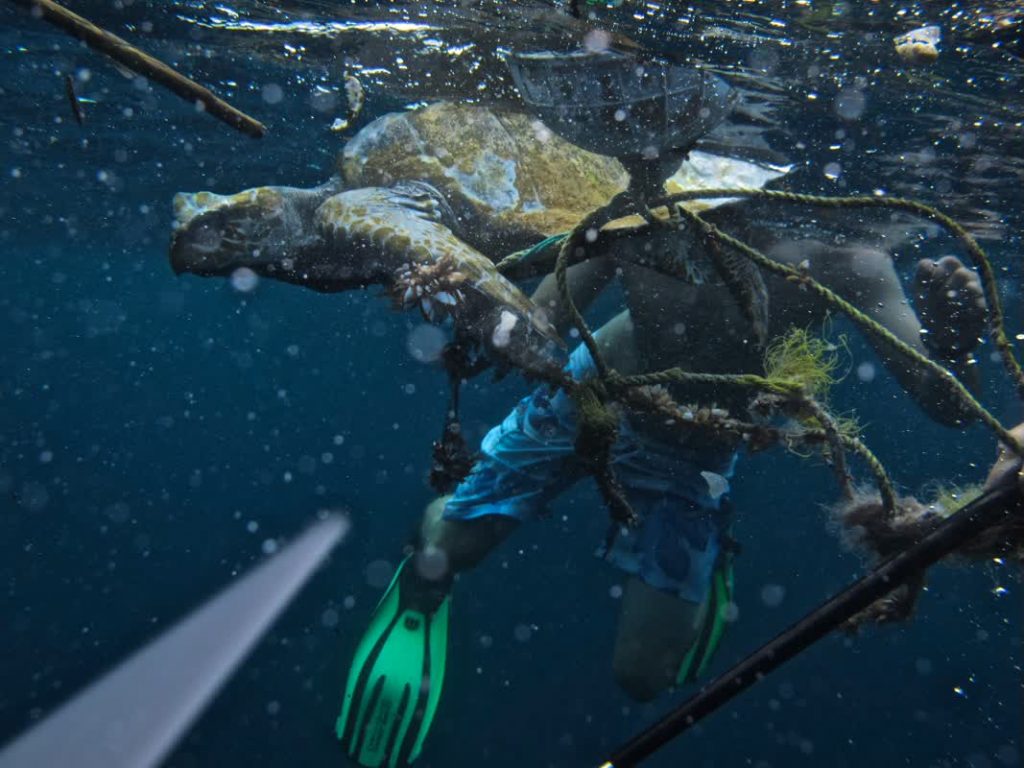
After spending ten days at sea from Panama, PlanetSolar arrived at the marvellous Galapagos Archipelago, renowned for its extraordinary fauna and its paradise islands. In San Cristobal the welcome the boat and her crew were given was magnificent. Later they would learn that since PlanetSolar’s visit and the message delivered concerning sustainability the local authorities have changed their legislation. Some islands in the archipelago are now only accessible with clean boats, either sail or electric. This provision has given great support to the development of solar boats in this region, and there are now very many of them in this mythical archipelago.
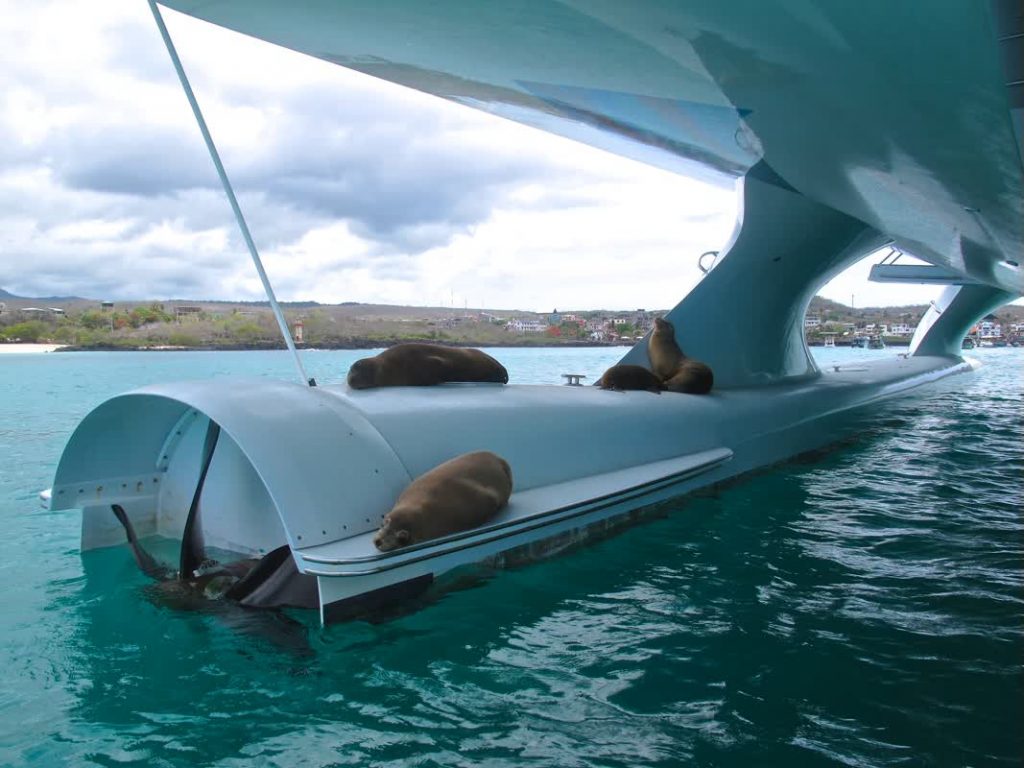
Here we find PlanetSolar following in the wake of the famous Kon-Tiki. 6000 kilometres of sea stretched out in front of the solar catamaran’s prow until the next port of call was reached, French Polynesia. For 27 days the crew did not see any other human presence, not a boat or even the smallest aircraft in the sky showed itself. At night the stars shone like never before and the members of the crew could lie on their vessel’s enormous solar panels and look at the Milky Way.

On 4 March 2011 PlanetSolar berthed in the port of Nuku Hiva. Throughout the Marquesas Island archipelago following in the footsteps of Paul Gaugin and Jacques Brel, who live on in the memory of these islands, the crew received a warm, enthusiastic welcome. The beauty of the surroundings and the generosity of the Marquesans will leave an eternal imprint in the memories of the solar sailors. However, isolated as they were in this enclave tucked away in paradise, they were brutally reminded of the world’s reality on the night of 11 March. While PlanetSolar was anchored in the open sea Raphaël learnt through the satellite and Inmarsat C that an earthquake had rocked Japan. A tsunami alert was given for the entire Pacific and so in the Marquesas Islands PlanetSolar was very happily in a safe place. However the whole crew was very worried as they learnt about the damage caused in Fukushima and the consequences of the nuclear accident, yet again showing the limits of this energy source and the need to change.
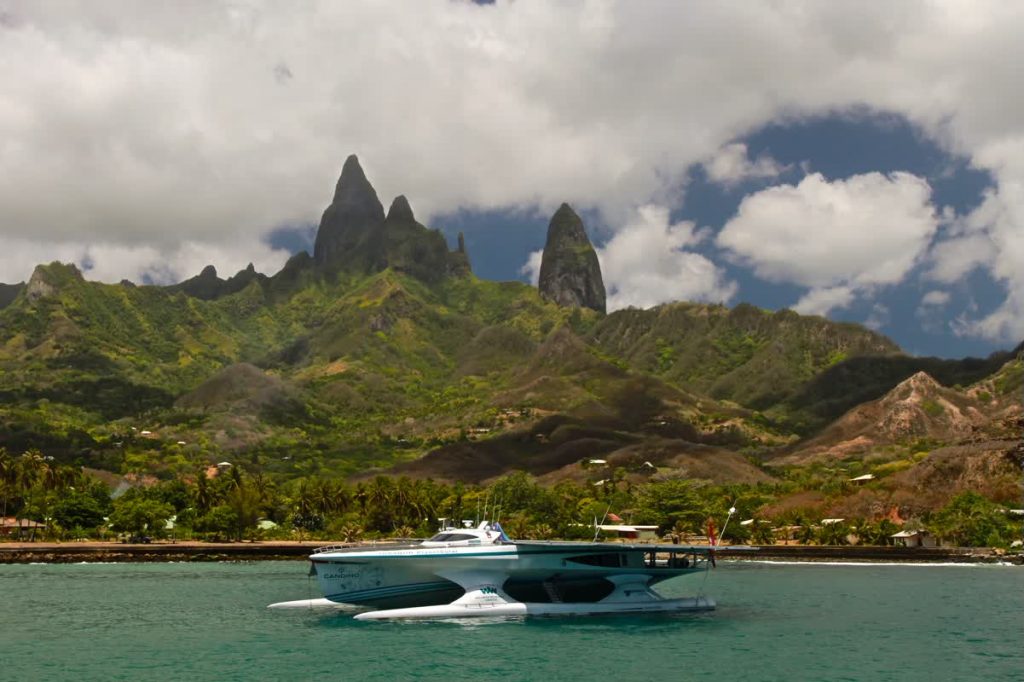
After the Marquesas Islands and stopovers in Papeete, Bora-Bora and Tonga, PlanetSolar set course for Australia. Météo-France announced rather rough seas and very soon the boat found herself tossed about by a wind that easily exceeded 25 knots. The solar vessel progressed with great difficulty in troughs of more than 4 metres on a raging sea. For the crew rest periods were shortened, watches got longer. However, the worst was yet to come. Some150 miles from Brisbane the wind suddenly picked up and the weather forecast confirmed that the storm would last for three long days. PlanetSolar took up the challenge, battened down the hatches and weathered the storm. During the night of 26 April 2011 the wind dropped. When the solar vessel entered the estuary she was accompanied by a whale and the gates to Australia finally opened before the bow.
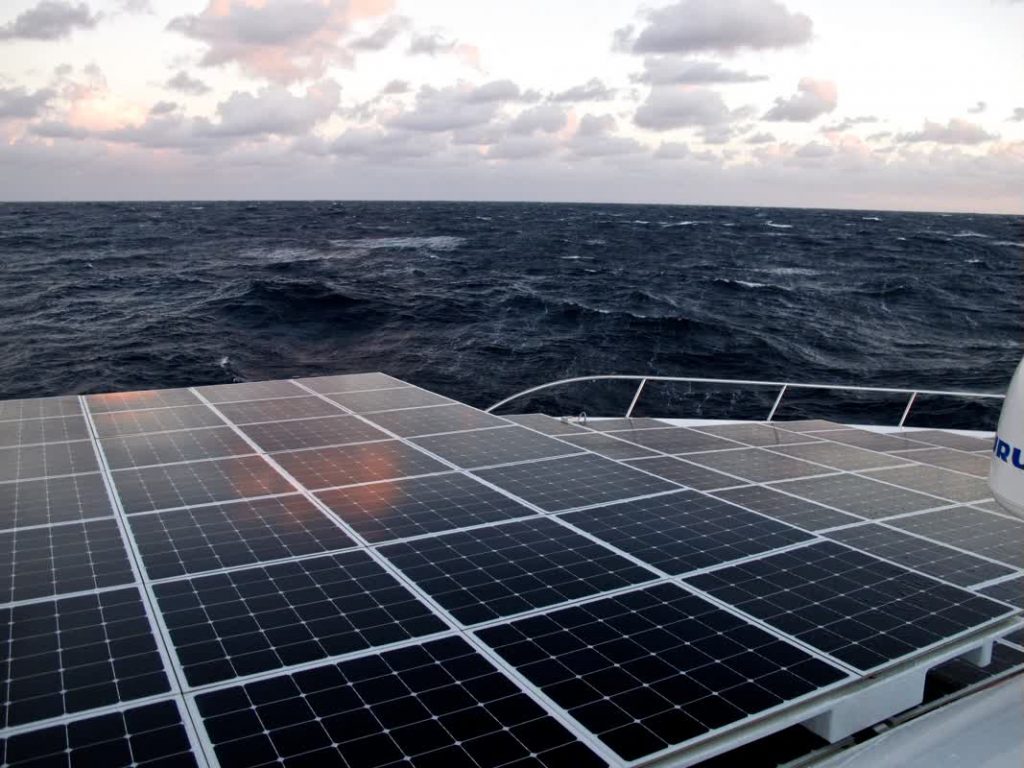
After ports of call in Manilla, Hong Kong and Singapore PlanetSolar sailed into the Indian Ocean, the very first solar boat to do so. Sailing along the coast of Malaysia was not risk-free. Pirate boats were sailing nearby and PlanetSolar chose to cross the most dangerous area at night with all lights off. Approaching Phuket, the sunrise over the Thai archipelago of Ko Phi Phi will remain engraved in the crew’s memory. Before arriving in Sri Lanka, via the Andaman Sea and the Gulf of Bengal, the boat experienced very strong currents, real rivers in the open sea! The crew chose to stop for a while in the vicinity of the Indian Andaman Islands in order to charge the batteries fully. These islands are very poorly identified on the charts and therefore closed to navigation. However, very quickly the Indian authorities understood that this was an unprecedented case. Once they came aboard the Indian soldiers were excited by what the solar sailors told them and offered their help if necessary. Whilst the batteries were charging, part of the crew went ashore to explore the virgin island where they were moored and, just like Robinson Crusoe, found a completely preserved natural environment.
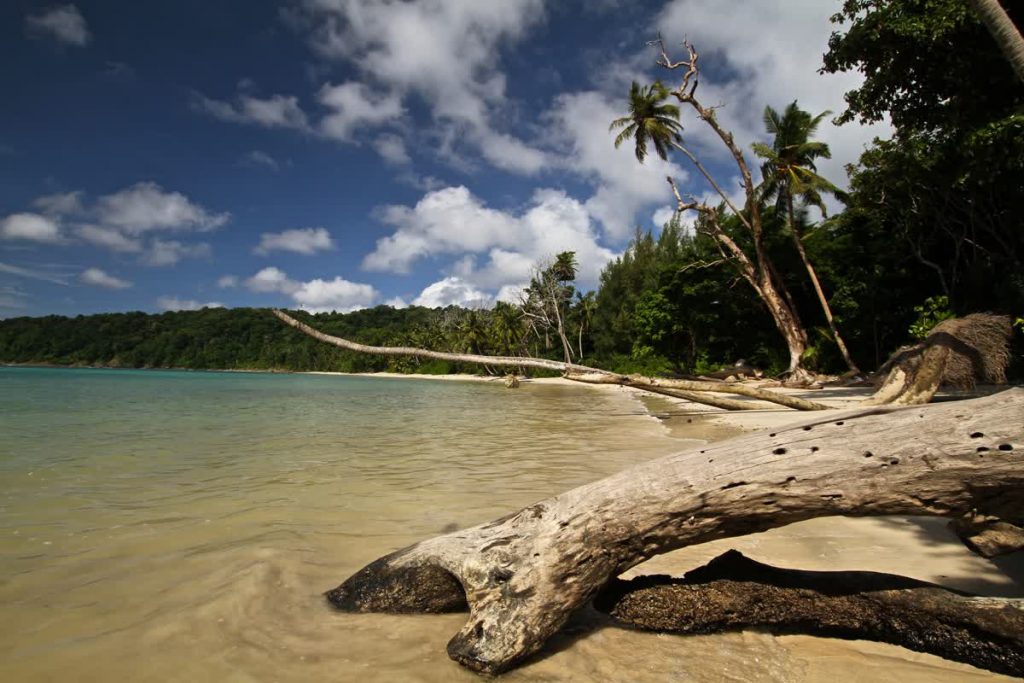
PlanetSolar had sailed along the west coast of India. The open sea was now behind her. She stopped in Doha and in mid-January 2012 set sail again for Abu Dhabi. But the luck the crew had had melted away on this Friday… the 13th! The boat had hardly left the channel when she found herself in thick fog, obliged to navigate using the radar rather than by sight. However, two days later she moored without a problem beside the World Future Energy Summit, the international meeting of scientists, politicians, businessmen and investors to consider energy problems and their potential solutions.
Several days later PlanetSolar prepared to visit Dubai. Suddenly, just after leaving the channel, a thud was heard in the cockpit. The crew stopped the motors and went to inspect the propulsion systems. To starboard there was a big problem and PlanetSolar, now uncontrollable, was pushed by strong winds towards the jetty in the port. There was a great danger of losing the boat and the crew. With the help of a large Zodiac from the marina, the crew tried to bring the boat to the canal where she would be sheltered but the ropes caught in the propeller and the only solution remaining was to drop anchor. Now, in this raging sea, they had to hope she would weather the assault by wind and waves. Night had fallen and a tow in these conditions would be madness. The anchor had to hold until daylight. Raphaël and Jens decided to take a closer look at the problem and dive. Very quickly they saw that it was the variable pitch locking system that had come unscrewed. Two tiny screws and the entire PlanetSolar adventure threatened to come to a halt. In the early hours, after an anxious night, calls for assistance on the shore remained in vain. No-one wanted to risk it in these conditions. Freeing the starboard propeller followed by the port propeller would require the crew to undertake perilous work lasting more than four hours. In the middle of the afternoon the anchor was weighed and, having escaped the worst, PlanetSolar got underway on her own towards the Emirates Palace Marina.
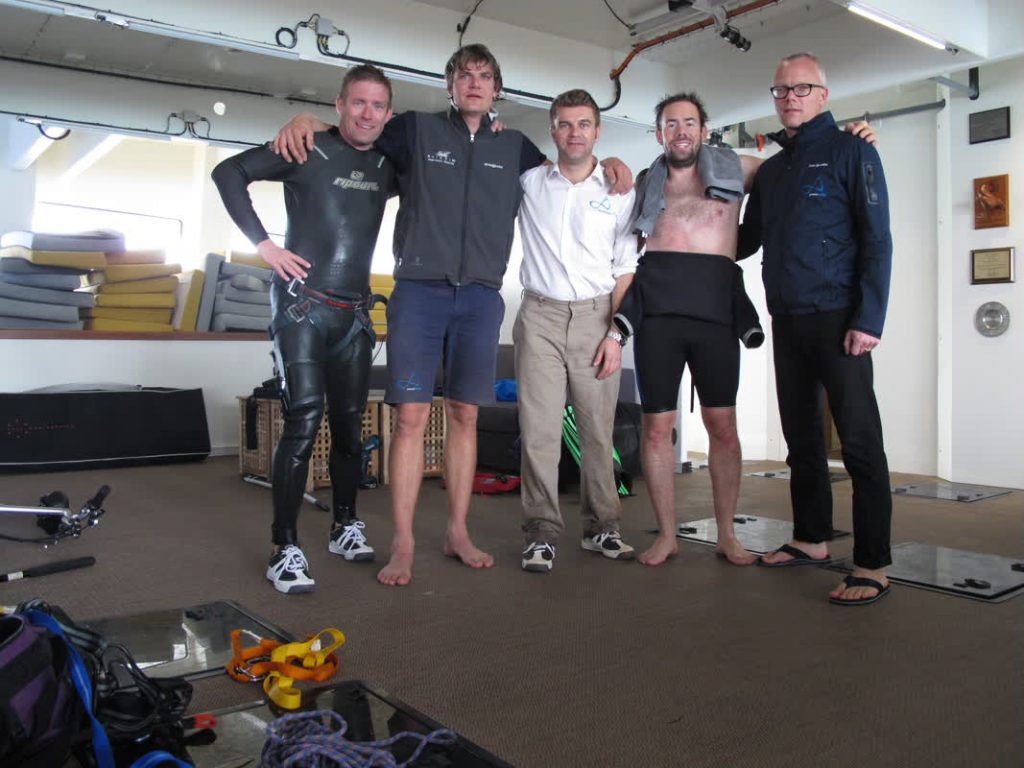
The next stage in PlanetSolar’s voyage was named “Operation Gulf of Aden”. Passage through this sea is actually extremely dangerous because it is infested with pirates. Christophe Keckeis, former Chief of the Swiss Armed Forces, was responsible for organising security onboard. PlanetSolar was then transformed into a veritable “bunker”: six men, all of whom were former soldiers from the French Army elite commandos, came aboard and the crew of PlanetSolar prepared themselves for attack in simulated exercises. The solar vessel left port in Abu Dhabi very discretely and entered the Sea of Oman en route for the dangerous Gulf of Aden. Erwann left the command to Patrick Marchesseau, who had expert knowledge of the region. At night PlanetSolar sailed without lights. During her crossing the crew were only under pressure once. Pirates had spotted and followed the strange solar boat for some time. However they decided not to approach PlanetSolar, much to the relief of all the men onboard. At the beginning of March 2012, PlanetSolar berthed safely for a brief stopover in Djibouti. Several days later she crossed the Bab-el-Mandeb Strait, the ultimate “hot spot” in the region, and finally reached the Red Sea.
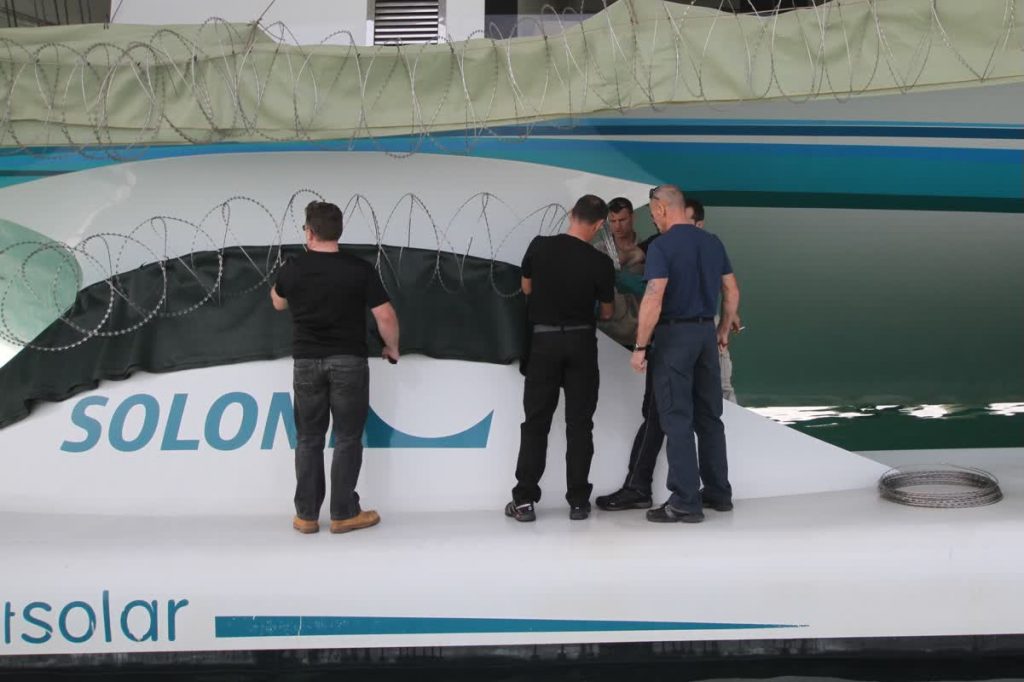
Half-way through the Red Sea, before the Suez Canal, the crew made a port call at Port Sudan. They then headed for the reef of Shab Rumi, where the batteries would be charged but also, and most especially, to go diving on the famous Captain Cousteau’s underwater village, Précontinent II. Gérard d’Aboville, the great French sailor and sponsor of the PlanetSolar adventure, had joined the crew for this underwater expedition in the footsteps of everyone’s hero. Viewing this historic site was a marvellous experience for the solar sailors. Cousteau wanted to prove that humans could live under the sea and it was here, in June 1963, that five men spend a month underwater becoming the first “aquanauts” in history. Albert Falco, Cousteau’s diving companion and captain of the Calypso who had taken part in this fabulous underwater adventure, should have been present during this dive. A friend of Raphaël and also a sponsor of the PlantSolar adventure, he was sadly very ill. He died several weeks later, just before the end of the Round the World tour, leaving the crew very emotional and with the feeling that they had seen a page of history turn.
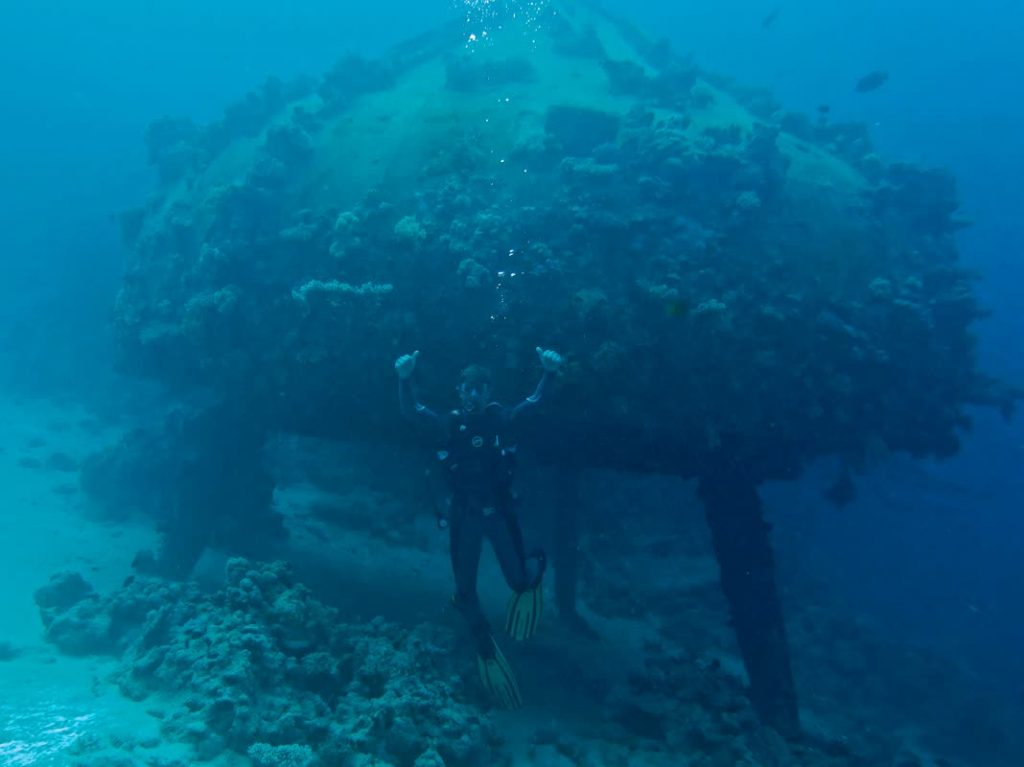
Going through the Suez Canal is no mean feat, but on 29 March 2012 PlanetSolar was once again sailing in the Mediterranean, where her circumnavigation had begun. The end of the adventure was near. The solar boat docked once more in Zakynthos, Greece and then in Messina, Sicily. As they sailed up the Italian coast there were successive ports of call so that journalists from the entire word could come aboard to follow the final days of the journey. Every day PlanetSolar drew closer to her final destination, Monaco. Calvi was the final port of call before the finish. There were only 170 kilometres left to travel and, in the minds of everyone on the board, nothing had yet been achieved and anything could still happen. It was difficult to realise that the exploit was on the verge of becoming reality. However, before her arrival and to prove her astonishing resources and abilities for a final time, PlanetSolar beat her own record for energy production on 3 May. 661 kilowatt-hours, which was better than she had been able to produce in the sunniest places on the planet! It was also, and most importantly, the tangible proof that after nearly two years of constant sailing around the world the equipment used was still intact.: solar technology had matured and was extremely reliable.
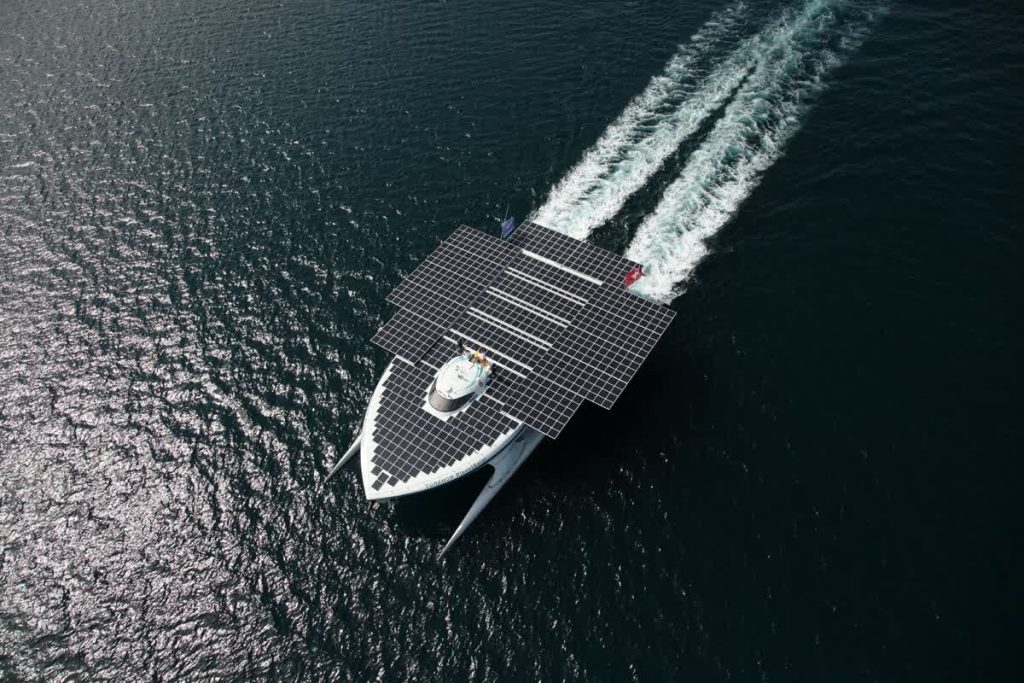
PlanetSolar and her crew were to spend their last night on the high seas 50 kilometres from port in the Principality of Monaco, the final stage of this Round the World tour. In Monaco there was a full welcome committee: all those who had made this incredible adventure possible were on the jetty, waiting for PlanetSolar’s arrival. So it was that on 4 May 2012 a little after 15:00 PlanetSolar crossed the symbolic finish line after sailing more than 60,000 kilometres in 585 days. At this precise moment she entered the history books as the first vehicle to have completed a world tour using only solar energy. The pictures showing Raphaël Domjan, Patrick Marchesseau, Erwann Le Rouzic, Jens Langwasser and Christian Ochsenbein with their arms linked on the bridge of the loyal boat have since made their own world tour.
